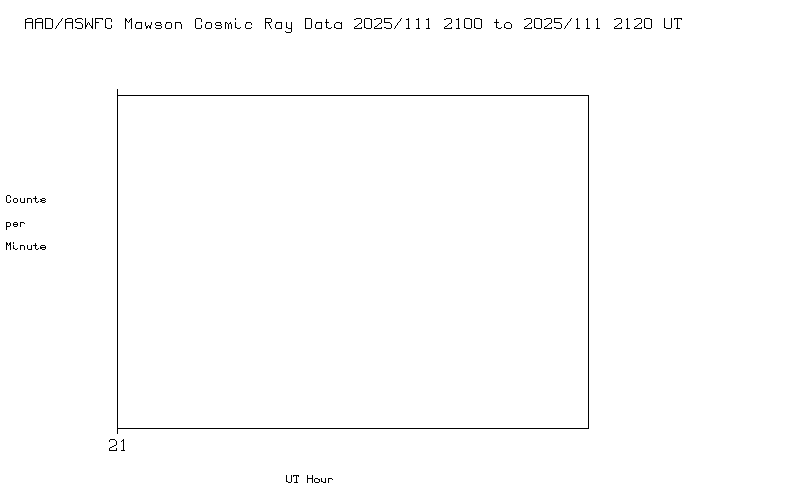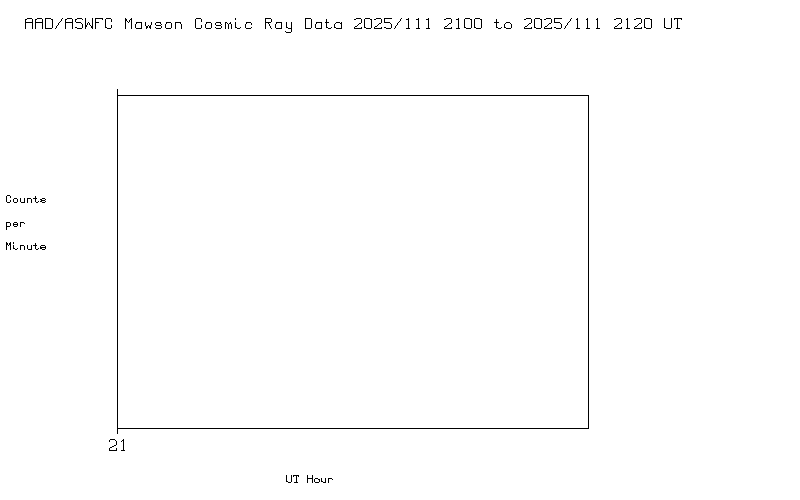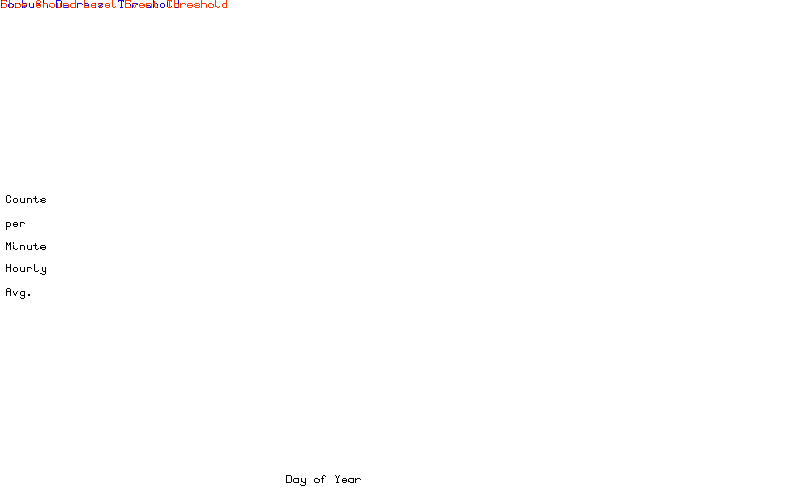Australian Antarctic Division Cosmic Ray Real Time Data at ASWFC
Fast Ground Level Event Detection Plots
Latest Minute Data:

Minute Data over last 24 hours:

Hourly Data over recent days:

Historical Australian Antarctic Division Cosmic Ray data from Kingston in Tasmania, and Mawson in Antarctica are available in the ASWFC World Data Centre.
Background
Cosmic rays consist mainly of protons. They can originate from galactic cosmic radiation or from the Sun. Cosmic rays are observed indirectly by a device known as a neutron monitor. When cosmic ray particles enter the Earth's atmosphere they interact with the nuclei of the air molecules to produce secondary radiation. This consists of pions (which decay to muons) and a shower of protons and neutrons. The neutrons predominate in this secondary radiation because the protons, being charged, are more easily attenuated in subsequent travel. The cosmic ray detector actual detects these secondary neutrons and as a consequence is referred to as a neutron monitor.
Ground Level Event
In a ground level event (GLE), an increase in detector count rate is not due to galactic cosmic radiation, but to the addition of solar cosmic (high energy) radiation (solar cosmic rays) from a previous solar particle event (SPE). The increase in the count rate may be from about 3 to 10,000%. The increase from ambient to peak count rate may take only a few minutes (fast high energy event) to an hour or two (slow and usually lower energy event). The return if the count rate to galactic cosmic ray background may take anywhere from a few hours to a few days.
Neutron Monitor Data from Mawson, Antarctica
Data is transferred at 5 minute intervals, 1 record per minute. For slow ground level event detection (increase in count rate) and forbush decrease (decrease in count rate) hourly averages of the minute data are used. Alert thresholds (above and below) have been set at 5 times the standard deviation obtained over a 48 hour period.
For fast ground level events the minute data is used with a increase perentage threshold of 10%.
The above thresholds are experimental and may need to be adjusted with experience.
The data displayed below is provided by the Australian Antarctic program in near real time. A neutron monitor located in Antarctica has no geomagnetic (lower) cutoff energy (although there is atmospheric cutoff energy), and thus provides the most sensitive indication of cosmic radiation of any sensor located on the Earth's surface.
Realtime Cosmic Ray detectors (Neutron Monitors) operated by other organizations are also available:




